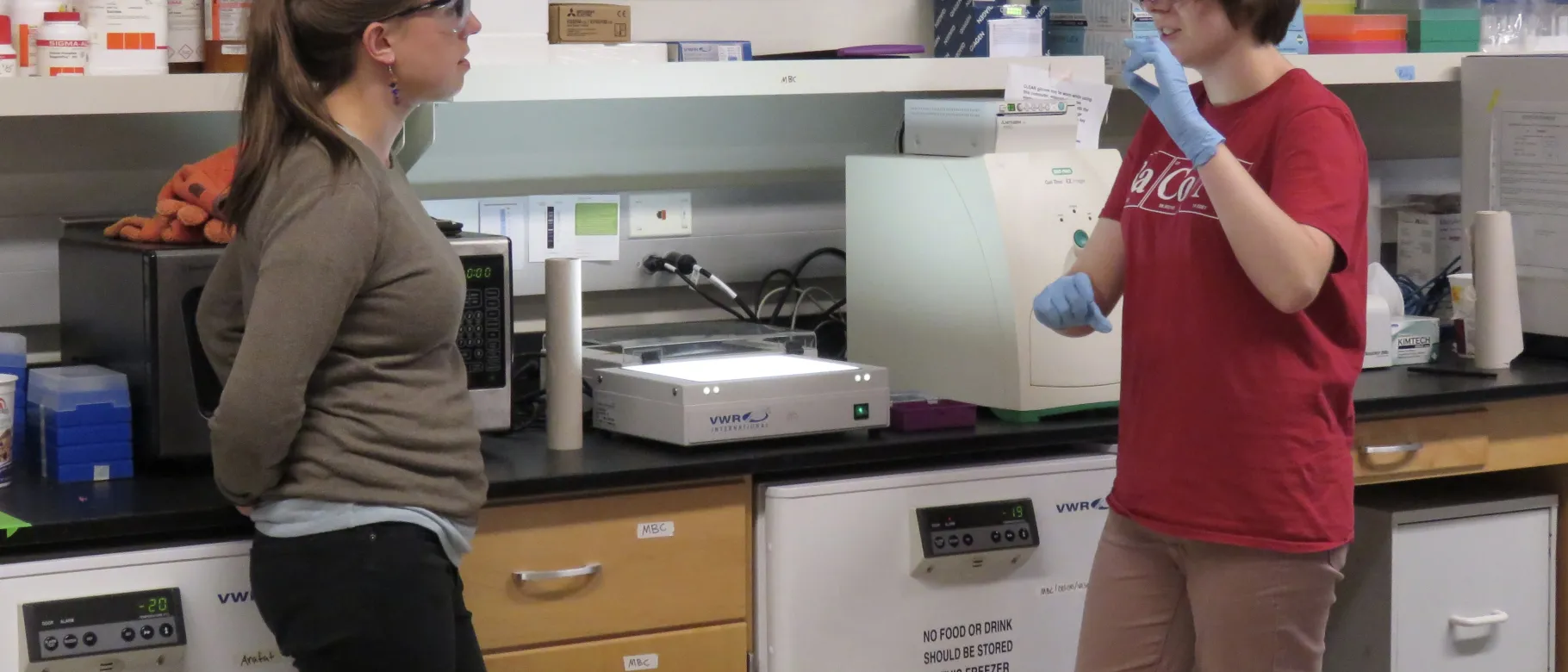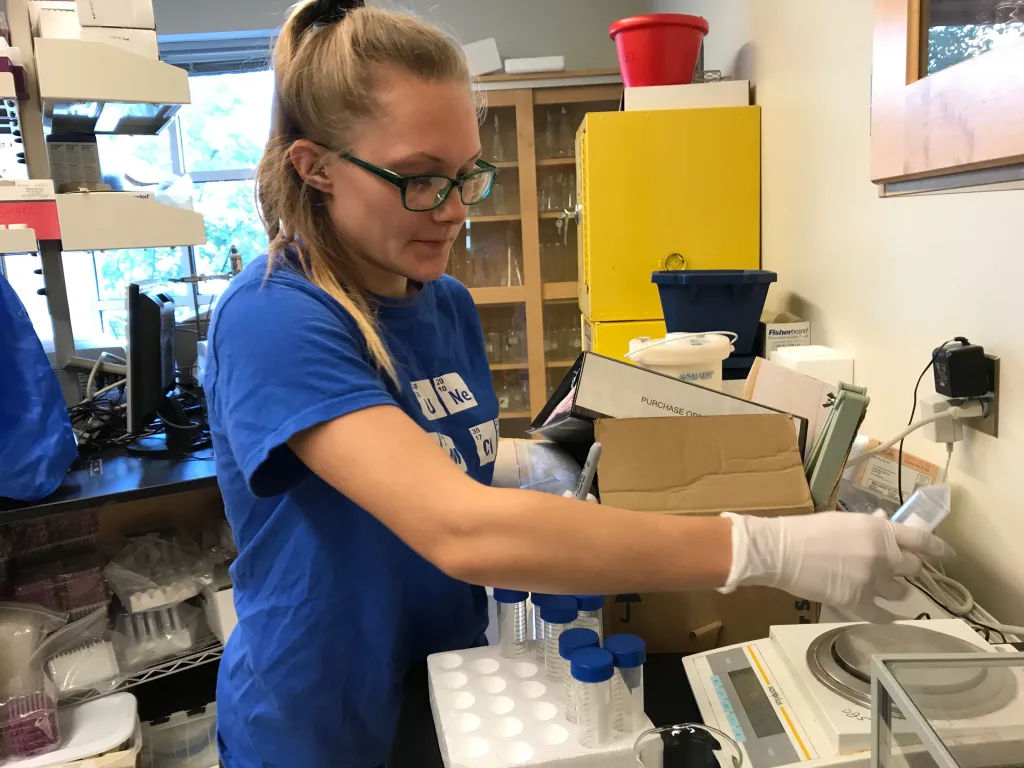Research by UNE Biochemistry students and faculty published in scientific journal

UNE researchers are the first to use flow imaging microscopy to study a class of engineered proteins called elastin-like polymers (ELPs). ELPs have shown promise for advanced drug delivery applications.
In order to fully realize their potential in this application, ELP-based materials need to be rigorously characterized to determine how they behave in different environments.
Using flow imaging microscopy, UNE researchers generated tens of thousands of images of individual particles in solution under different conditions. They used software to automatically sort and filter the images based on dozens of particle characteristics related to size, shape and optical properties.
A research paper based on their work was recently published in PLOS One, a peer-reviewed open access scientific journal published by the Public Library of Science. The journal covers primary research from any discipline within science and medicine.
The research team's work represents both a proof-of-concept (that this is a viable and useful approach) and a possible roadmap for future investigation of similar materials.
The paper discusses the advantages and limitations of flow imaging microscopy in comparison with other commonly used techniques, as well as how to deal with the enormous quantities of data generated by this method.
The research originated in the lab of Eva Rose Balog, Ph.D., assistant professor in the Department of Chemistry and Physics, and was led by undergraduate lead author Laura Marvin (Biochemistry, ’20). Marvin played a significant role in the design of the study and conducted the majority of the experiments.
“What's really special about this is all of the work in the paper was initiated and carried out by a student, Laura Marvin,” stated Balog. “In a lot of research labs in chemistry and biochemistry, undergraduates are assistants. In my lab, they're the lead scientists doing the bench work, and they earn full first authorship for their work.”
Wynter Paiva (Biochemistry, ’20) and James Vesenka, Ph.D., professor in the Department of Chemistry and Physics, were also authors for the paper.
The research was made possible by two Major Research Instrumentation grants from the National Science Foundation (NSF) that were used for the purchase of two instruments housed at UNE. The FlowCam was used for the flow imaging microscopy and the atomic force microscope was used for additional particle characterization within the work. A third NSF grant for nano-biosensing research also funded the development and study of the elastin-like polymers that were characterized.
The paper represents a unique collaboration between the UNE Department of Chemistry and Physics, the University of New Hampshire Department of Chemical Engineering and the Maine-based company Fluid Imaging, manufacturers of the FlowCam.
